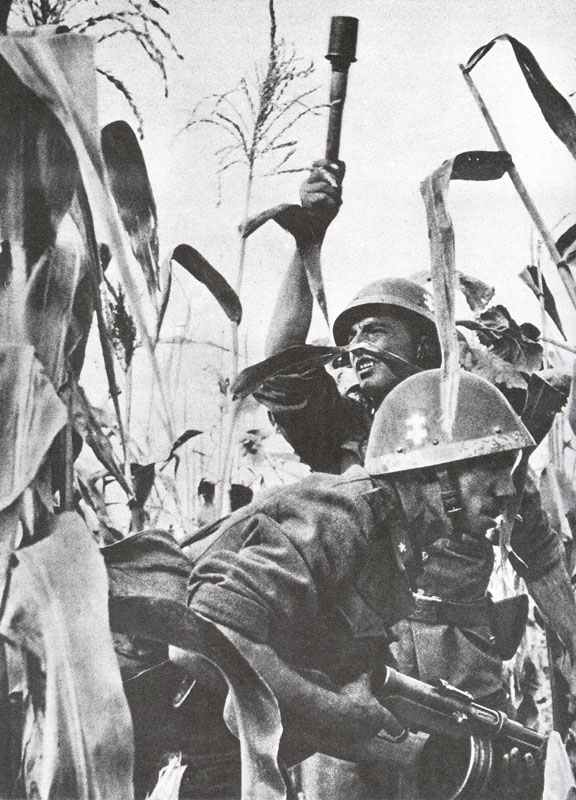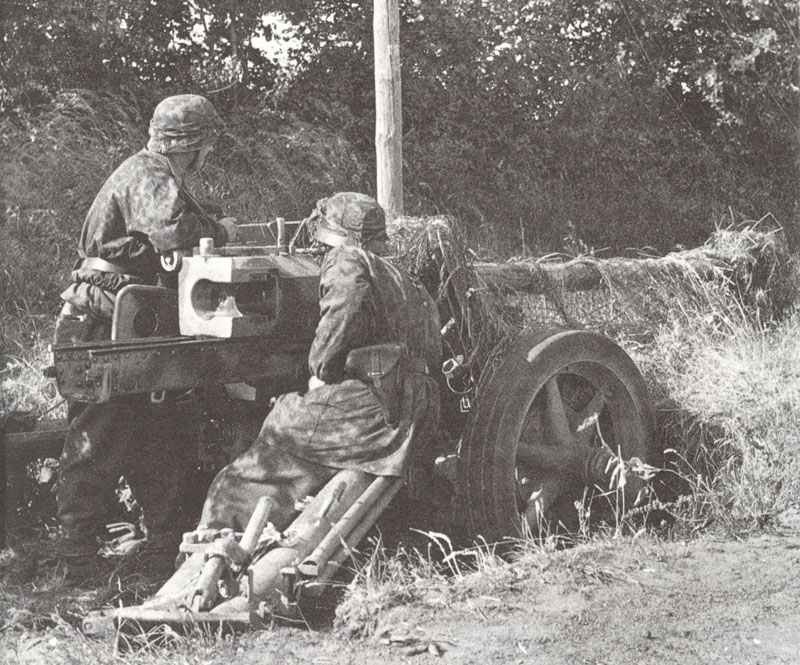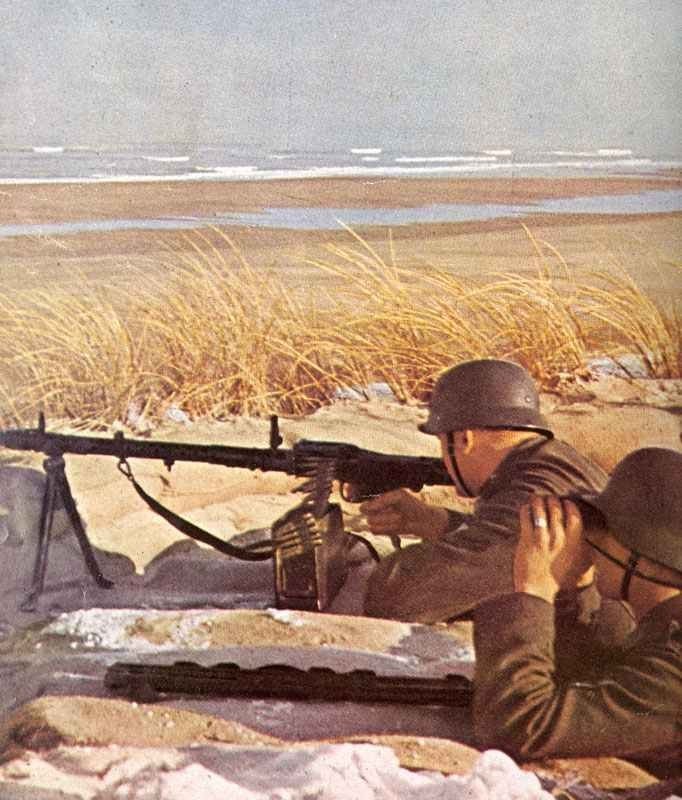German medium bomber Junkers Ju 88 from World War II.
History, development, service, effectiveness, specification, pictures and 3D model.
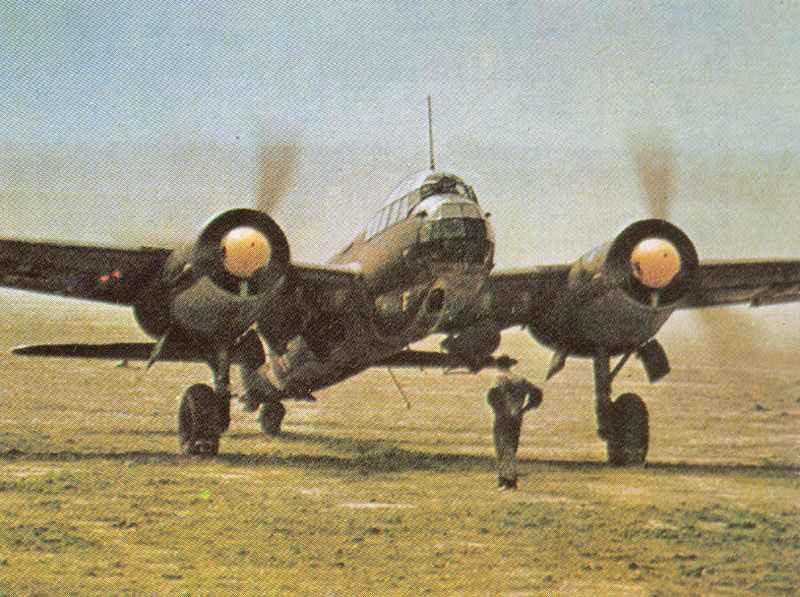
Junkers Ju 88
Type: medium bomber, dive bomber, close support aircraft, night fighter, heavy fighter, torpedo plane, reconnaissance aircraft and pilot less missile.
History:
Table of Contents
Regarding the range of various tasks a plane might carry out successfully, the Junkers Ju 88 had been quite possibly the most adaptable combat plane at any time designed. The only alternative competitor for this brand being the de Havilland Mosquito.
Initially developed as a focused high-speed bomber, the Ju 88 airframe turned out to be perfectly fitted to practically every other sort of combat task, apart from close in dog-fighting, and a lot more Ju 88s had been manufactured compared to every other twin-engine plane of the Second World War.
Apart from dive and level-bombing, Ju 88s were additionally used for night-fighting, long-range escort, tank-busting, fast intruding, anti-shipping duties, anti-submarine warfare, destruction of Allied maritime aircraft, glider towing, supply dropping, transport, training, strategic and tactical reconnaissance, pathfinders, close support, torpedo dropping, as well as pilot less missile strike.
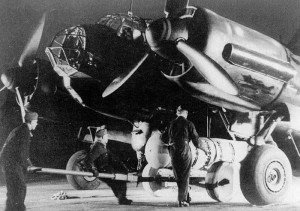
In contrast to such aircraft like the He 111 and Ju 87 Stuka, which were kept in manufacturing until close to the end of WW2 as a result of inability to get an alternative, the Ju 88 was still a first-class front line aircraft at the conclusion of the war in Europe. Yet, it was in no way so downgraded in overall performance as to turn out to be critically vulnerable as were the He 111 or Do 17 bombers. Of course, using the BMW radial and the Jumo 213 motors the final variants were more or less as fast as the best contemporary fighters at all altitudes and could be fought strongly into the bargain.
It would be useless to illustrate the Ju 88 as a war-winning machine because Germany lost World War 2; however absolutely no plane did more, in all types of tasks as well as on all fronts, to prevent defeat.
In 1935 the RLM (German air ministry) questioned the functionality of a ‘combat destroyer’ capable of fly bomber, reconnaissance and bomber-destroyer tasks. It consequently released an alternative demand for a simple ‘fast bomber’ to be able to fly at 300 mph (500 km/hr) and transport a bomb load of 1,766 lb (800 kg).
Junkers proceeded to go straight to get the deal, to the degree of employing a pair of amazing Us developers who had developed innovative stressed-skin components in America. Junkers’ expertise worked since it was the absolute quality of the elementary Ju 88 design that allowed it to have this kind of outstanding flexibility, rather than any sort of farsightedness by the officialdom or smart proper intending.
The first prototype Ju 88 V1 initial flew secretly on December 21, 1936, operated by 1,000 hp Daimler-Benz DB 600A motors. There then followed 2 1/2 years of drawn-out and also at moments shattering sluggish, as well as most times secret, development, regarding numerous experimental planes. Such as the Ju 88 V5, operated by Junkers Jumo 211A motors, which on March 9, 1939, established a surprising world 600 miles (1,000 km) program record with a 4,415 lb (2,000 kg) load at 321 mph (517 km/hr). The Ju 88 had been in that way discovered by the world.
The V6 had been the real ‘bomber prototype’ and presented long solitary leg primary landing gears with steel ring springs instead of oleo struts. This allowed bigger than regular wheels, well suited for unpaved landing grounds, which could be kept in low rear nacelles since the wheels turned 90° throughout retraction. During the early 1940s the Ju 88 had the best innovative landing gear of any plane at this time being produced.
The V6 prototype furthermore presented the unique 4 seat crew section at the aircraft’s front. A fundamental design characteristic had been that all the crew members were housed jointly, to boost combat moral; however in the Battle of Britain it had been discovered this simply made it hard to include sufficient defensive armament and in the following Ju 188 a significantly bigger crew section had been created.
An order of 20 pre-production Ju 88A-0s weren’t manufactured until early 1939 operated by two 1200hp Jumo 211B motors. Evaluation confirmed these plane were able of delivering a 5,300 lb bomb load transported inside as well as on 4 huge bomb racks on the inner wings. This bomb load overtook that of any current Luftwaffe plane.
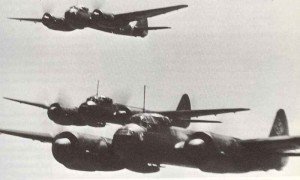
The identical Ju 88A-1 manufacturing plane didn’t get into operation until September 1939; just before the outbreak of WW2. The earliest unit operated with Ju 88s was I./KG 30, which had an assortment of pre-production A-0 and A-1 planes to build up numbers in September and October 1939.
As soon as January 1940 the Ju 88A-1 had been planned to be exchanged by the Ju 88A-4 which had an extended wing span and employed 1,340 or l,400hp Jumo 211F/J motors. Setbacks on power plants production resulted in the Ju 88A-5 beat the A-4, and this one got just the extended wing span as well as 1200hp Jumo 211G motors. Ju 88A-1s and A-5s predominated throughout the air fights of 1940 as well as Ju 88 quickly turned out itself the most effective of all German bombers. This had been primarily thanks to its outstanding maneuverability and speed. Because the RLM had insisted quite pointlessly that original Ju 88s should be ideal for dive-bombing so the air frame had been sufficiently strong to stand up to really severe challenging maneuvers as well as significant combat damage.
Ju 88A-4s with 1340/1400hp Jumo 211F/J motors begun arriving in sizeable figures about mid-1940. This would end up being the main manufacturing version of the A models and became the starting point for a number of additional models. By the end of 1940 the Ju 88A-4 included structural improvements enabling more weights, even more improves in standard bomb load of 5,519 lb (2,500 kg) as well as much better defensive armament. The armament at this time made up 1 x 7.92 mm MG within the front cockpit, and 1 x 13 mm or 2 x 7.92 mm MGs inside a ventral gondola. Manufacturing averaged approximately 2,000 aircraft each year in 1940 to 1943.
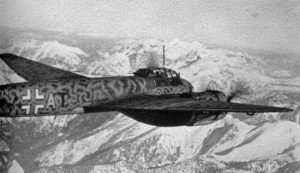
On June 21, 1941, there were 536 Ju 88s used in 17 Bomber groups and Coastal Aviation Groups, in planning to back up Operation Barbarossa.
This was 56 per-cent of the 949 twin-engine bombers of all types stationed in the Luftwaffe units on the Eastern Front. By now the Ju 88A-4 had been the major operational model and, sadly for the Red Army and Red Air Force, the Ju 88 at this time involved all the lessons realized in the air fights over Western Europe: in June 1941 the Ju88A-4 had been just about the most powerful and deadly twin-engine bomber operating worldwide.
23 Ju 88 A-4s were delivered to the Finish Air Force in 1943, 52 Ju 88 A-4s and D-1s to the Italian Air Force in 1943 , along with other A-4s and Ds to the Romanian and Hungarian air forces.
Effectiveness of the Ju 88 bombers
After all this is actually definitely worth quickly to look at the comparable efficiency of Allied and German twin-engine bombers throughout the first years of WW2.
From 1939 to 1942 the Junkers Ju 88, Dornier Do 17 and Heinkel He 111 bombers had been undertaking offensive missions in daytime as well as over a long-term time. At first, these missions had been mainly tactical in character and aimed at assisting the Wehrmacht‘s numerous ground battles.
Later on, they involved anti-shipping, intruder interdiction, not to mention strategic bombing throughout the Battle of Britain.
These operations had been executed under different situations: such as without fighter escort, along with fighter escort, versus strong opponent fighter resistance, without powerful opponent fighters, as well as any mixture thereof.
The Luftwaffe was in common in a position to bomb opponent targets in daylight. Even if fighter escort had been not available and not a great number of enemy fighter planes attacked, the German twin-engine bombers – and here especially the Ju 88 – could commonly operate successfully.
Needless to say, in opposition to great number of advanced fighter planes guided by making use of radar, and without having sufficient fighter protection over a longer time like during the Battle of Britain, German bomber losses had been unacceptably serious and could not be encountered.
The most significant present-day French, British, and Russian twin-engine bombers created in an equal pre-war time were:
- Tupolev SB-2 (first flight April 1934),
- the Bloch 210 (first flight November 1934),
- the Armstrong Whitworth Whitley (first flight March 1936),
- Ilyushin DB-3 (first flight May 1936),
- Handley Page Hampden (first flight June 1936),
- Vickers Wellington I-III (first flight June 1936).
- Bristol Blenheim I (first flight June 1936),
- Bristol Blenheim IV (first flight September 1937), and
- Potez 63 (first flight late 1937).
With the likely exclusion of the Russian Ilyushin DB-3, not one of the previously mentioned bomber models managed to effectively perform offensive missions in daytime over any sizeable time period, in opposition to even comparatively weak German fighter opposition.
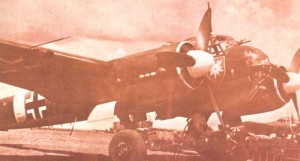
During 1939 to 1942, if any sizeable formation of the aforementioned bombers (excepting the DB-3) was intercepted during daytime without having fighter escort by just a few Me 109 fighters, the outcome had been commonly in the vicinity of a massacre.
Quite simply, not one of the earlier mentioned Allied bombers used in 1939 to 1942 demonstrated an equal degree of survivability in opposition to contemporary adversary fighter planes as the German twin-engine bombers, and particularly the Ju 88.
Every one of the British twin-engine bombers had been quickly removed from daytime operations when it became clear they couldn’t manage the Me 109 during daytime. For instance, the Vickers Wellington, which was the leading RAF bomber deployed in 1939, had been taken out from daytime strikes versus land targets as soon as March 1940. This had been some time before the Battle for France had actually begun !
Various other British bombers like the Hampden and Blenheim immediately struggled devastating losses during the Battle for France in May 1940, with the remnants being promptly taken out to Britain and transferring to night missions. The French bombers did not continue quite a few period simply because they couldn’t be easily removed and were lacking the comfort of moving over to night missions.
Aside from the Luftwaffe, just the Russian Red Air Force continued with employing their twin-engine bombers in daytime missions in excess of a prolonged time period throughout 1939 to 1942. The outcome had been the virtually entire sacrificing of the biggest medium bomber force that existed as much as June 1941. This force was made up of 1000s of twin-engine bombers, mainly the Tupolev SB-2 and SB-2bis.
Throughout June and July 1941 the Red Air Force over and over again dispatched wave after wave of SB-2s and DB-3s on close to suicidal operations against the advancing German spear heads. Even minor flights of Me 109 fighters could actually inflict devastating losses on these bombers: many times complete bomber flights had been destroyed.
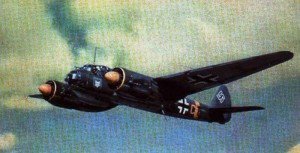
Simultaneously the significantly outnumbered He 111 and Ju 88 bomber groups had been regularly running two, three or four operations per day, typically without having fighter escort, and could actually keep an affordable attrition rate whilst causing essential destruction on the Red Army‘s rear area and big chaos on the Red Air Force’s airfields.
Through 1941 these bomber groups, in particular the Ju 88s, had been usually capable of survive interception by the Red Air Force fighter planes along with the more contemporary models including the Yak 1, LaGG3, and MiG 3.
It is rather simple to overlook the overall efficiency of German twin-engine bombers throughout the period 1939 to 1942. Numerous WW2 ‘experts’ intentionally and automatically give the He 111, as well as a decreased degree the Ju 88, an equal bad promotion like the Allied twin-engine bombers of this time: means, they were significantly weak against enemy fighter opposition and could not really usually operate at daytime without having fighter cover.
It appears this kind of perspective mainly comes from post-war thoughts of the Battle of Britain, and disregards the rest of the key air fights battled over Western and Eastern Europe between 1939 and 1942.
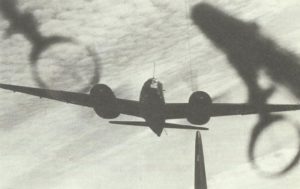
During the real daylight Battle of Britain between July 10, to October 31, 1940, the Luftwaffe lost 1,922 planes totally demolished, among them 636 Me 109 single-engine fighters. During the same time the British lost 1,065 planes totally wrecked, among them 1,004 fighters. This is a Royal Air Force kill-loss ratio of 1.8 to 1.
When the Russian, French, or British Air Forces tried to attack with their twin-engine bombers during daytime, as well as over a longer time, in opposition to German fighters in 1939 to 1942, the German’s kill-loss ratio was almost always much above 1.8 to 1 and more detailed three to five vs 1.
By instance, during daytime missions over Western Europe in 1941 and 1942 the Royal Air Force sacrificed nearly 5 planes (about 4 fighters and 1 bomber) for every single German fighter shot down.
On the Russian Front in the summer of 1941 comparable stats had been a great deal even worse for the Russians.
The explanation for the German bomber’s in comparison good results from 1939 to 1942 is sort of complicated. It contains elements like aircrew and especially pilot training, fighter aircraft technology and quality, air force strike and defense doctrine as well as tactical arrangement, as well as know-how of ground command and air direction of units, such as radar. Nevertheless, it is quite clear that the Ju 88’s – and to a smaller degree the He 111’s – general design efficiency was a key contributing element.
Ju 88 heavy fighter
Research into the utilization of the Ju 88 as heavy fighter started prior to the initial bomber model came into service, and the V7 prototype had been the prelude to the C/B types. The Ju 88B initial maiden-flight was in 1939 with increased effective crew compartment and finally resulted in creation of the Junkers 188 bomber.
The Ju88C-0 pre-production plane furthermore initial had its maiden-flight in 1939 and made use of the Ju A-1 bomber as a starting point. The heavy fighter types had 3 crew members against the 4 in the bombers, with a solid nose for the equipment of weapons, plus they employed the bomb bay for a ventral guns gondola. The Ju88C airframe creation usually paralleled that of the A series: the C-4 being using the A-4 featuring its bolstered structure and further potent Jumo 211F/J motors.
They were strongly armed planes: armament usually made of 3 x 20 mm guns and 3 7.92 MGs in the solid nose, a single 13 mm MG inside the rear cockpit, 2 x 20 mm guns in the ventral gondola, plus eventually 2 x upward firing 20 mm guns in the upper fuselage as ‘Schräge Musik’. The Ju 88C-4 continued to be the major kind of Ju 88 night intruder and fighter before the introduction of the superior C-6 in 1942. Through the summer of 1941 fairly only a few Ju 88C planes had been manufactured, and they were seldom observed on the Eastern Front. The bigger bulk were assigned to night fighter wings in Western Europe, to protect the Reich against British night bombers. A handful of do appear to have used in Long range strategic reconnaissance groups on the Russian Front from 1941 onwards.
Ju 88 long-range reconnaissance aircraft
The flexibility of the Ju 88A-4 bomber acquired itself to the developing on a fast, long-range reconnaissance plane. This evolved into the Ju 88D models which had a crew of 4, a light defensive armament, numerous camera housings and extra internal fuel tanks to enhance long-range missions. The Ju88D-0 pre-production plane employed 1200hp Jumo 211B motors, while the initial version to go in operation had been the identical Ju 88D-2 in mid-1940. The Ju88D-1 had been the most important manufacturing version and it utilized the even more potent 1400hp Jumo 2111 motors and had a defensive armament just like the A-4. This allowed a speed of 301mph (ca. 484 km/h) at 15,750ft (ca. 4,801 m) along with a range of 2980 miles (ca. 4,796 km). Later versions additionally had the ability to handle external drop tanks or bombs. On June 21, 1941, the Ju88D-l had been the major kind of Ju 88 reconnaissance planes operating. At this point it represented about 1 / 2 of the 317 planes deployed in Long range strategic reconnaissance groups and Weather Observation Squadrons on the Russian front.
Ju 88 high-speed bombers
Following dividing off brand-new sections which resulted in the Ju 188 and Ju 388, bomber evolution had been forwarded to the streamlined S models of greater overall performance, it’s having become recognized that the conventional Luftwaffe types of bomber had been doomed if intercepted, regardless of how numerous additional weapons and crew it could have. Certainly even the fuel loads and bombs were decline in most S sub-types, nevertheless the S-2 had fuel in the classic bomb bay and huge bulged bomb stowage, which overcome the goal of decreasing drag.
Ultimate bomber variations incorporated the Nbwe with flame-throwers and recoilless rocket projectors, P models of big-gun anti-armor and close-support planes, and a huge group of Mistel composite-aircraft combos, where the Ju 88 lower part was a pilot less missile controlled by the Me 109 G aircraft in the beginning attached to top.
Totally bomber, reconnaissance and associated Ju 88s totaled 10,774, while hectic manufacturing of night fighter variants in 1944 to 1945 carried the overall to no less than 14,980 aircraft. The Ju 88 night fighters, and particularly the perfectly developed G-series, had been incredibly powerful, strongly equipped with weapons and radar and being accountable for wrecking more Allied night bombers than all the other aircraft put together.
Users: Bulgarian, Finland, Germany, Hungary, Italy, Romania.
Animated 3d model of Junkers Ju 88
Specifications for Junkers Ju 88 A-4
Specification:
| Ju 88 A-4 | specification |
|---|---|
| Type | medium bomber |
| Power plant | two 1,340-hp Junkers Jumo 211J-1 12-cylinder inverted-vee liquid-cooled engines |
| Accommodation | 4 |
| Wing span | 65 ft 7.4 in (20.00 m) |
| Length overall | 47 ft 2.9 in (14.40 m) |
| Height overall | 15 ft 10.9 in (4.85 m) |
| Wing area | 586.63 sq.ft (54.50 m²) |
| Weight empty | 21,738 lb (9,860 kg) |
| Weight maximum loaded | 30,865 lb (14,000 kg) |
| Max wing loading | 51.61 lb/sq.ft (256.88 kg/m²) |
| Max power loading | 11.43 lb/hp (5.18 kg/hp) |
| Max level speed | 292 mph (470 km/hr) at 17,390 ft (5,300 m) |
| Cruising speed | 248 mph (400 km/hr) at 16,405 ft (5,000 m) |
| Initial climb | 1,312 ft/min (400 m/min) |
| Time to height | 23.0 min to 17,715 ft (5,400 m) |
| Service ceiling | 26,905 ft (8,200 m) |
| Range | 1,112 miles (1,790 km) |
Armament:
| Ju 88 A-4 | Specification |
|---|---|
| forward | one 7.92-mm MG 81 (1,200 rpm; velocity 2,477 ft.sec) and one 13-mm MG 131 (930 rpm; velocity 2.461 ft.sec) |
| upper rear | one 13-mm MG 131 (930 rpm; velocity 2,461 ft.sec) |
| rear of ventral gondola | two 7.92-mm MG 81 (1,200 rpm; velocity 2,477 ft.sec) |
| front of ventral gondola (only late models) | two 7.92-mm MG 81 (1,200 rpm; velocity 2,477 ft.sec) |
| MGs total | 5-7 |
| bomb load | 1,100 lb (500 kg) internal and four external racks rated at 2,200 lb (1,000 kg) (inners) and 1,100 lb (500 kg) (outers) to maximum total bomb load of 6,614 lb (3,000 kg) |
Service statistics:
| Junkers Ju 88 A-4 | figures |
|---|---|
| First flight (Ju 88V1) | 21 December 1936 |
| Service delivery (Ju 88 A-1) | 7 September 1939 |
| Service delivery (A-4) | mid-1940 in numbers |
| Final delivery | May 1945 (fighters) |
| Unit cost | ? |
| Total production figure | 10,774 bomber and reconnaissance planes (all versions at least 14,980) |
| Accepted by Luftwaffe 1/39-12/44 (bomber, ground attack, night fighter, reconnaissance) | 14,321 |
| Production (bombers) 1939 | 69 |
| Production 1940 | 1,816 (+62 fighters, +330 recon) |
| Production 1941 | 2,146 (+66 fighters, +568 recon) |
| Production 1942 | 2,270 (+257 fighters, +567 recon) |
| Production 1943 | 2,160 (+706 fighters, +394 recon) |
| Production 1944 | 661 (+2,513 fighters, +3 ground attack, +52 recon) |
| Production 1945 | - (+355 fighters) |
| Ju 88's in First Line Units 1.9.39 | 20 |
| Ju 88's (all) in First Line Units 20.9.42 | 917 |
| Ju 88's (all) in First Line Units 31.12.42 | 845 (520 bombers, 260 recon, 65 fighters) |
| Ju 88's (all) in First Line Units 10.1.45 | 935 (179 bombers) |
References and literature
Combat Aircraft of World War II (Bill Gunston)
Technik und Einsatz der Kampfflugzeuge vom 1. Weltkrieg bis heute (Ian Parsons)
Das große Buch der Luftkämpfe (Ian Parsons)
Luftkrieg (Piekalkiewicz)
Flugzeuge des 2. Weltkrieges (Andrew Kershaw)
German Aircraft of World War 2 in Colour (Kenneth Munson)
Warplanes of the Luftwaffe (David Donald)
The Luftwaffe Album, Bomber and Fighter Aircraft of the German Air Force 1933-1945 (Joachim Dressel, Manfred Griehl)
Luftwaffe Handbook (Dr Alfred Price)
Operation Barbarossa: the Complete Organisational and Statistical Analysis, and Military Simulation, Volume I – IIIB (Nigel Askey)
The Encyclopedia of Weapons of World War II (Chris Bishop)




